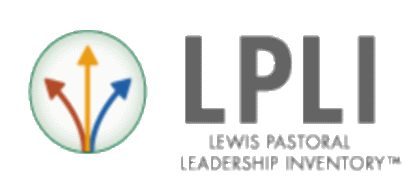Clergy effectiveness is on the mind of virtually every denominational leader today. Indeed, many judicatories have initiatives underway to define, assess, and improve clergy effectiveness. Effectiveness is not a new issue, but it certainly has an intensity about it today that is different from some times in the past.
Good pastors can become better leaders if they have a way to talk about effectiveness in ministry in objective and meaningful ways and get the kind of feedback they need to improve.
Actually, it is more accurate to say that clergy ineffectiveness is what is getting the most attention. That is unfortunate because leader development programs almost never are successful in addressing ineffectiveness. Giving such inordinate attention to ineffective clergy takes precious energy away from a much larger group of clergy for whom leadership development efforts are appropriate and needed.
Recent research by a variety of groups suggests that most clergy are seen as effective in many ways. Very few congregants would describe their pastors as ineffective. Yet, those same congregants know that things are not as they should be in their congregations, and their pastors would be the first to acknowledge that they are not satisfied with the fruits of their ministry. Good pastors can become better leaders if they have a way to talk about effectiveness in ministry in objective and meaningful ways and get the kind of feedback they need to improve.
Defining effectiveness in pastoral leadership is not easy. But the Lewis Center has identified some key themes running through all such descriptions. To develop a pastoral leadership assessment instrument, the Center analyzed the content of descriptions of pastoral effectiveness developed independently by many denominations and judicatories. The goal was to find the elements almost always present in such descriptions. This content analysis pointed to three umbrella categories that captured most things talked about in terms of effectiveness.
Character
The first category has to do with character or who the pastoral leader is as a person. We know today that no matter how gifted pastors are or how knowledgeable, in the end they can only be effective pastoral leaders if they are people of character — people that others can look to with trust, look to as spiritual leaders. And within character several subcategories emerged — spiritual authenticity, integrity, wholeness, and self awareness.
Competence
The second category deals with competence or what leader know, what they do, and how they function. This category overflowed, for clergy are expected to know and do a myriad of things well. But the content analysis revealed that there are certain essential aspects of competence that relate to knowledge and teaching, proclamation and worship, pastoral skills, administrative skills, professional judgment, and strategic discernment.
Contribution
The third category to emerge is contribution. If character refers to who the leader is, and competence to what the leader does, contribution refers to what the leader accomplishes. In biblical language, we would talk about this as fruitfulness or the fruits of ministry. Key themes related to contribution are: discerns a vision, builds a team, reaches new people, fosters faith development, and expands mission and service.
Lewis Pastoral Leadership Inventory™
From this research on the characteristics of effectiveness, a 360-degree leadership assessment instrument, the Lewis Pastoral Leadership Inventory™ (LPLI), was developed and field tested for more than two years with over 1,500 clergy. The LPLI consists of a seventy-five question inventory completed online by the pastor and up to ten persons who know the pastor’s work. Personalized reports go to pastors showing how they rated themselves, how their observers rated them, and how their ratings compare to all clergy who have taken the survey.
One important benefit of this assessment is that it permits pastors to have meaningful conversations with others about their effectiveness in ministry — conversations they may not have had before, or at least not with specificity or depth. The LPLI gives the pastor the opportunity to invite specific, constructive feedback and then seek help in interpreting that feedback. The pastor can say, “Here are some places you tended to rate me higher than I did myself. Why is that?” Or perhaps, “Here is a place where I rated myself far higher than my observers did. Could you give me some examples that might help me understand why there’s such a difference?” Or, “Here are some strengths I think I have and the observers affirm that also. How could I develop these strengths in the coming year?”
The LPLI is designed to help good clergy become better clergy. It is most useful for those who start out wanting to grow, knowing that God has gifted them in special ways, but also knowing that we are never fulfilling our ministry as completely as we can in the future. Whatever else a pastor is, a pastor is a leader of a faith community. No matter how young our old the pastor is, no matter how small or large the congregation is, from day one, the pastor is looked to as a congregational leader. We believe the LPLI can help clergy know more about how to lead well and effectively in our time. For more information, go to LPLI.org.







